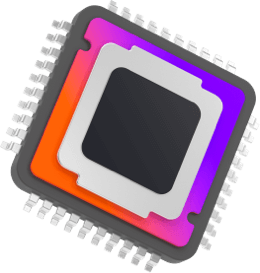| Qualcomm Snapdragon QM215 | Intel Core i5-2400 | |
| Max TDP | 95 W | |
| NA | Consommation électrique par jour (kWh) | NA |
| NA | Coût de fonctionnement par jour | NA |
| NA | Consommation d'énergie par an (kWh) | NA |
| NA | Coût de fonctionnement par an | NA |
Qualcomm Snapdragon QM215 vs Intel Core i5-2400

Le Qualcomm Snapdragon QM215 fonctionne avec 453 cœurs et 4 threads CPU. Il fonctionne à -- base tous les cœurs tandis que le TDP est défini sur .Le processeur est connecté au socket du processeur N/A Cette version inclut -- de cache L3 sur une seule puce, prend en charge 1 pour prendre en charge la LPDDR3-667 et dispose de PCIe Gen . Tjunction reste en dessous de -- degrés C. En particulier, Cortex-A53 architecture est améliorée avec la 28 nm et prend en charge la None . Le produit a été lancé le Q3/2019

Le Intel Core i5-2400 fonctionne avec 4 cœurs et 4 threads CPU. Il fonctionne à 3.40 GHz base No turbo tous les cœurs tandis que le TDP est défini sur 95 W .Le processeur est connecté au socket du processeur LGA 1155 Cette version inclut 6.00 MB de cache L3 sur une seule puce, prend en charge 2 pour prendre en charge la DDR3-1066DDR3-1333 et dispose de PCIe Gen . Tjunction reste en dessous de -- degrés C. En particulier, Sandy Bridge S architecture est améliorée avec la 32 nm et prend en charge la VT-x, VT-x EPT . Le produit a été lancé le Q1/2011
Qualcomm Snapdragon QM215
Intel Core i5-2400
Comparer les détails
| 1.30 GHz | La fréquence | 3.10 GHz |
| 453 | Noyaux | 4 |
| -- | Turbo (1 noyau) | 3.40 GHz |
| Turbo (tous les cœurs) | No turbo | |
| Hyper-Threading | No | |
| Overclocking | No |
|
| normal | Architecture de base | normal |
| Qualcomm Adreno 308 | GPU | Intel HD Graphics 2000 |
| 0.50 GHz | GPU (Turbo) | 1.10 GHz |
| 28 nm | La technologie | 32 nm |
| 0.50 GHz | GPU (Turbo) | 1.10 GHz |
| 11 | Version DirectX | 10.1 |
| 0 | Max. affiche | 2 |
| LPDDR3-667 | Mémoire | DDR3-1066DDR3-1333 |
| 1 | Canaux de mémoire | 2 |
| Mémoire max | ||
| ECC | No |
|
| -- | L2 Cache | -- |
| -- | L3 Cache | 6.00 MB |
| Version PCIe | ||
| PCIe lanes | ||
| 28 nm | La technologie | 32 nm |
| N/A | Prise | LGA 1155 |
| TDP | 95 W | |
| None | La virtualisation | VT-x, VT-x EPT |
| Q3/2019 | Date de sortie | Q1/2011 |
Cinebench R23 (Single-Core)
Cinebench R23 est le successeur de Cinebench R20 et est également basé sur la suite Cinema 4. Cinema 4 est un logiciel utilisé dans le monde entier pour créer des formes 3D. Le test monocœur n'utilise qu'un seul cœur de processeur, la quantité de cœurs ou la capacité d'hyperthreading ne compte pas.
Cinebench R23 (Multi-Core)
Cinebench R23 est le successeur de Cinebench R20 et est également basé sur la suite Cinema 4. Cinema 4 est un logiciel utilisé dans le monde entier pour créer des formes 3D. Le test multicœur implique tous les cœurs de processeur et tire un gros avantage de l'hyperthreading.
Cinebench R20 (Single-Core)
Cinebench R20 est le successeur de Cinebench R15 et est également basé sur la suite Cinema 4. Cinema 4 est un logiciel utilisé dans le monde entier pour créer des formes 3D. Le test monocœur n'utilise qu'un seul cœur de processeur, la quantité de cœurs ou la capacité d'hyperthreading ne compte pas.
Cinebench R20 (Multi-Core)
Cinebench R20 est le successeur de Cinebench R15 et est également basé sur la suite Cinema 4. Cinema 4 est un logiciel utilisé dans le monde entier pour créer des formes 3D. Le test multicœur implique tous les cœurs de processeur et tire un gros avantage de l'hyperthreading.
Geekbench 5, 64bit (Single-Core)
Geekbench 5 est un benchmark multi-plateforme qui utilise fortement la mémoire système. Une mémoire rapide poussera beaucoup le résultat. Le test monocœur n'utilise qu'un seul cœur de processeur, la quantité de cœurs ou la capacité d'hyperthreading ne compte pas.
Geekbench 5, 64bit (Multi-Core)
Geekbench 5 est un benchmark multi-plateforme qui utilise fortement la mémoire système. Une mémoire rapide poussera beaucoup le résultat. Le test multicœur implique tous les cœurs de processeur et tire un gros avantage de l'hyperthreading.
iGPU - FP32 Performance (Single-precision GFLOPS)
Les performances de calcul théoriques de l'unité graphique interne du processeur avec une précision simple (32 bits) dans GFLOPS. GFLOPS indique le nombre de milliards d'opérations en virgule flottante que l'iGPU peut effectuer par seconde.

Estimation de l'utilisation électrique


